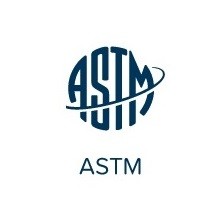
روش آزمایش استاندارد برای محتوای سلول باز پلاستیک سلولی سخت
1. حوزه
1.1. این روش آزمایش پوشش دهنده پلاستیک های سلولی تشکیل شده از غشاء دیواره های پلیمر است که حفره ها یا سلول های کوچک را جدا می کند. این سلول ها ممکن است متصل (سلول باز) یا غیر متصل (سلول بسته) یا ترکیبی از آن ها باشند. این آزمایش یک تعیین تخلخل است که حجم سلولی در دسترس از یک ماده را اندازه گیری می کند. حجم باقی مانده حجمی است که توسط سلول های بسته و دیواره سلول ها اشغال شده است. از آنجا که هر نمونه با اندازه مناسب تنها با چند عملیات برش به دست می آید، بخشی از سلول های بسته بوسیله آماده سازی نمونه باز می شوند و سلول های باز به حساب می آیند (به نکته 2 مراجعه شود)
1.2. این روش آزمایش درجه دقت مناسبی را در مواد با سلول بسیار باز فراهم می کند. این درجه دقت با عدم توجیه اینکه سلول های بسته در خلال آماده سازی نمونه باز بوده اند، یعنی هنگامی که محتوای سلول بسته و اندازه سلول افزایش پیدا می کند کاهش می یابد.
1.3. همانطور که در واحدهای SI توضیح داده شده است مقادیر بعنوان مقادیر استاندارد در نظر گرفته می شوند. مقادیر درون پرانتز تنها بعنوان مرجع ارائه شده اند.
1.4. این استاندارد تمامی موضوعات ایمنی را مورد توجه قرار نمی دهد و هر کدام از آن ها را مورد توجه قرار دهد با استفاده آن مرتبط است. به عهده استفاده کننده این استاندارد است که از روش های ایمن و سالم بهره برده و کاربردپذیر بودن محدودیت های نظارتی را پیش از استفاده تعیین کند.
نکته 1: این روش آزمایش و ISO 4590 از اصول اساسی یکسان بهره برده اما جزئیات تجربی آن ها متفاوت است.
نکته 2: دو روش برای تصحیح سلول های باز در خلال آماده سازی نمونه در ضمیمه X1.1 ارائه شده است.
1. Scope
1.1 This test method covers cellular plastics, which are composed of membranes or walls of polymer separating small cavities or cells. These cells may be interconnecting (open cell), non-connecting (closed cell), or any combination of these types. This test method determines numerical values for open cells. It is a porosity determination, measuring the accessible cellular volume of a material. The remaining volume is that occupied by closed cells and cell walls. Since any conveniently sized specimen can only be obtained by some cutting operation, a fraction of the closed cells will be opened by specimen preparation and will be included as open cells, (see Note 2).
1.2 This test method provides good accuracy on predominantly highly open-celled materials. By not accounting for closed cells that were opened during specimen preparation, the accuracy decreases as the closed cell content increases and as the cell size increases.
1.3 The values as stated in SI units are to be regarded as the standard. The values in parentheses are given for reference only.
1.4 This standard does not purport to address all of the safety concerns, if any, associated with its use. It is the responsibility of the user of this standard to establish appropriate safety and health practices and determine the applicability of regulatory limitations prior to use.
NOTE 1—This test method and ISO 4590 use the same basic principles but are significantly different in experimental detail.
NOTE 2—Two procedures for correcting for cells opened during specimen preparation are described in Appendix X1.1.
حوزه
مراجع
استانداردهای ASTM
استاندارد ISO
نمادها
خلاصه این روش آزمایش
اهمیت و استفاده
دستگاه ها
چگالی سنج گاز
دستگاه برش
نمونه برداری و آماده سازی نمونه آزمایشی
آماده سازی
مراحل
محاسبه
گزارش
دقت و انحراف
کلمات کلیدی
پیوست (اطلاعات لازم)
نظریه ای برای کالیبراسیون چگالی سنج
اصلاح سلول های باز شده در خلال آماده سازی نمونه
1. Scope
2. Referenced Documents
3. Terminology
4. Summary of Test Method
5. Significance and Use
6. Apparatus
7. Sampling and Test Specimen Preparation
8. Conditioning
9. Procedure
10. Calculation
11. Report
12. Precision and Bias
13. Keywords
ANNEXES
A1. PRINCIPLE OF OPERATION OF THE GAS PYCNOMETER
A2. THEORY FOR CALIBRATING THE PYCNOMETER
A3. CALIBRATING THE PYCNOMETER
- ترجمه فارسی مقاله با فرمت ورد (word) با قابلیت ویرایش، بدون آرم سایت ای ترجمه
- ترجمه فارسی مقاله با فرمت pdf، بدون آرم سایت ای ترجمه
